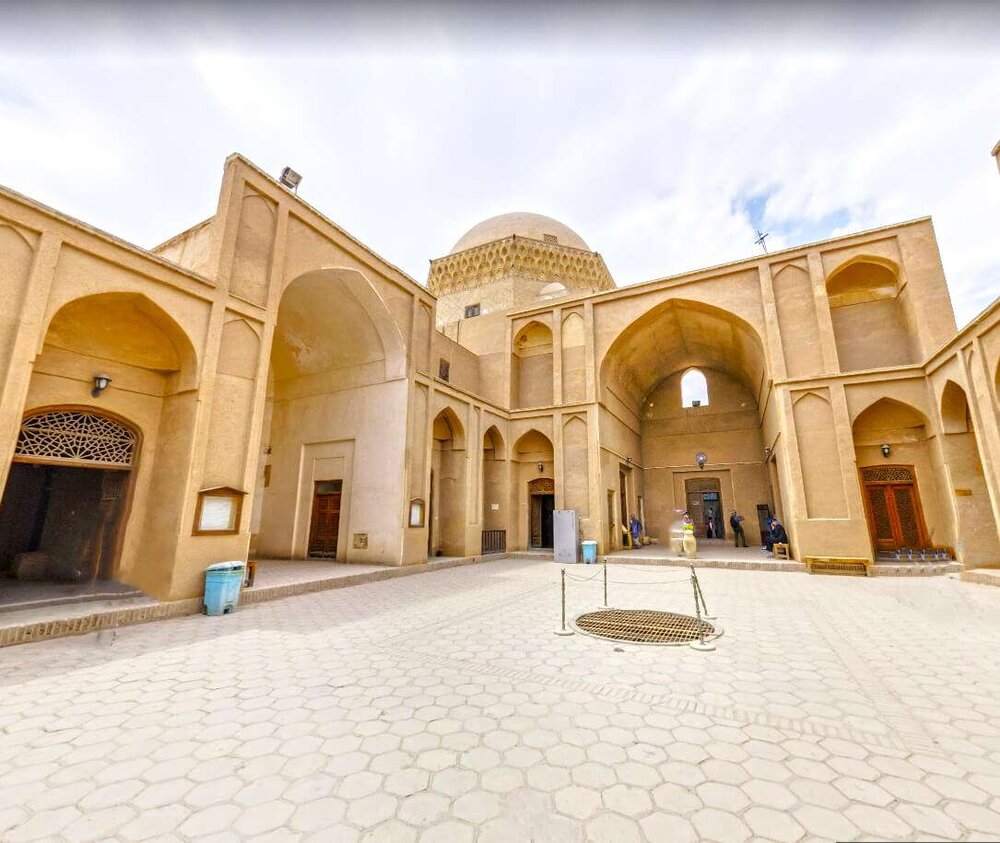The legend of Alexander’s Prison in central Iran

TEHRAN – Passed down through generations, myths and legends are the traditional stories that hold distinct significance to a society or culture, particularly those which are deeply rooted in time.
Alexander’s Prison (locally called “Zendaan-e Eskandar”), is a legendary place named after Alexander the Great, also known as Alexander of Macedonia, who overthrew the Persian Empire in about 330 BC.
The mysterious place is located in one of the old neighborhoods of Yazd, in central Iran. However, as a modern visitor, what you see is like a centuries-old domed building made of bricks, clay, and mortar; it does not match a prison or so at all.
The complex, however, contains a deep, circular, brick-lined pit almost 10 meters in diameter resembling an ancient dungeon found at the heart of the old. There is also a well and some nooks in the courtyard.
The most vigorous account arises from a reference to a poem of Hafez, the industrious 14th-century Persian poet Khwaja Shams al-Din Muḥammad Ḥafeẓ-e Shirazi, known by his pen name Hafez.
According to the legend, a deep well in the middle of the courtyard of the structure was in fact built by Alexander the Great and used as a dungeon.
Some locals say that Alexander's Prison, or the Zia’iya school in the Fahadan neighborhood of Yazd, was built on the request of Alexander the Great, during his invasion of Iran, centuries before the complex being modified and reconstructed as a school.
There are recounts saying the religious school has no connection to Alexander. Another alternative suggests the name comes from the claim that it was built by Alexander the Great as a prison for some Persian protesters...
No tile works have been used in the construction of this building and perhaps this is the secret of the survival of this monument until today. The beautiful dome of this building is made of brick and is decorated with azure and golden plaster that nowadays only a part of it leftover. It has an old courtyard with three balconies around it. It is also possible to mention the presence of a well in the middle of the courtyard, which ends with the cellar.
The noteworthy architectural features of the dome are traceable in other domes dating to the Mongolian period in Iran. Each side of the domed tower is almost 9 meters long and it rises almost 18 meters tall. There is little left of the inscriptions inside the dome but from what remains it appears to be Kufic writings.
Although the original purpose of the building is unknown, nevertheless, it now serves as an Ethnographic Museum. Inside there is a detailed scaled model of the old city and a collection of labeled archaeological artifacts that were dug up around the city. What really brings the museum to life however is the staff of traditionally trained artisans who are on hand to show off their skills by working the old wood-framed looms and throwing clay pots to demonstrate the crafts that made the city famous throughout Persia and along the old Silk Road to China.
In terms of location, Twelve Imams Tomb, the Lari House, and the Heydarzadeh Museum of Coin and Anthropology are located near Alexander's Prison. One significant feature of Alexander's prison is the dome that is very similar to the dome of the Twelve Imams Tomb.
In 2006 for the first time, Cultural Heritage authorities undertook an elaborate program to treat Eskandar Prison with pesticides to negate the threat of termites. Eskandar Prison is a registered Iranian National Heritage.
With its winding lanes, the forest of badgirs (wind catchers), mud-brick houses, atmospheric alleyways, and centuries of history, Yazd is a delightful place to stay, referring to as a ‘don't miss’ destination by almost all travel associates in the region. The oasis city is wedged between the northern Dasht-e Kavir and the southern Dasht-e Lut on a flat plain ringed by mountains. Yazd Jameh Mosque, Dowlatabad Garden, the Yazd Atash Behram, also known as Atashkadeh-e Yazd, Towers of Silence, and adjacent desert landscape are among its tourist sites.
AFM/MG

Leave a Comment